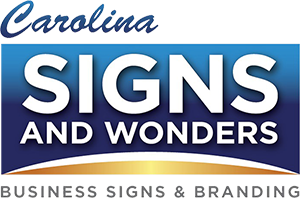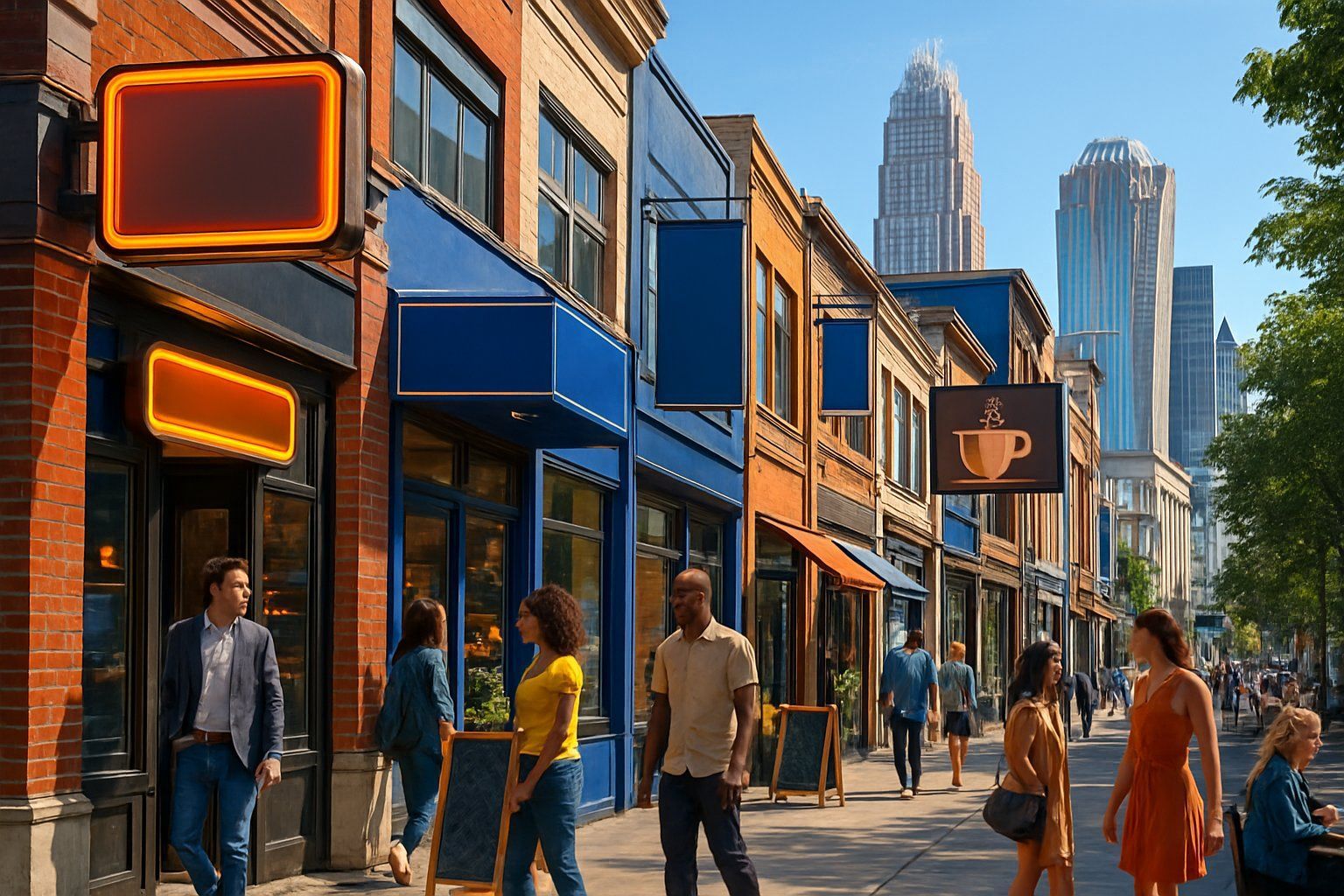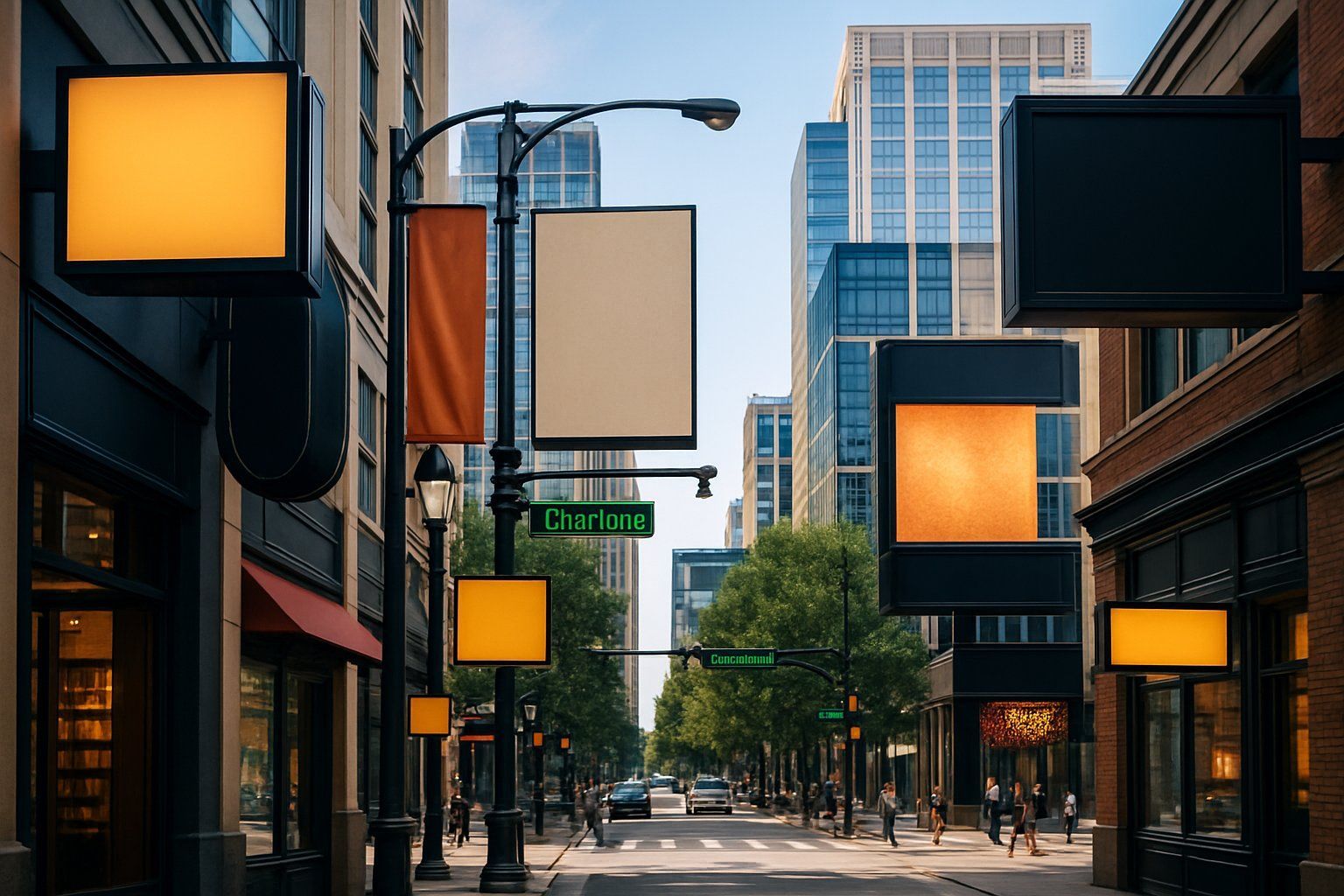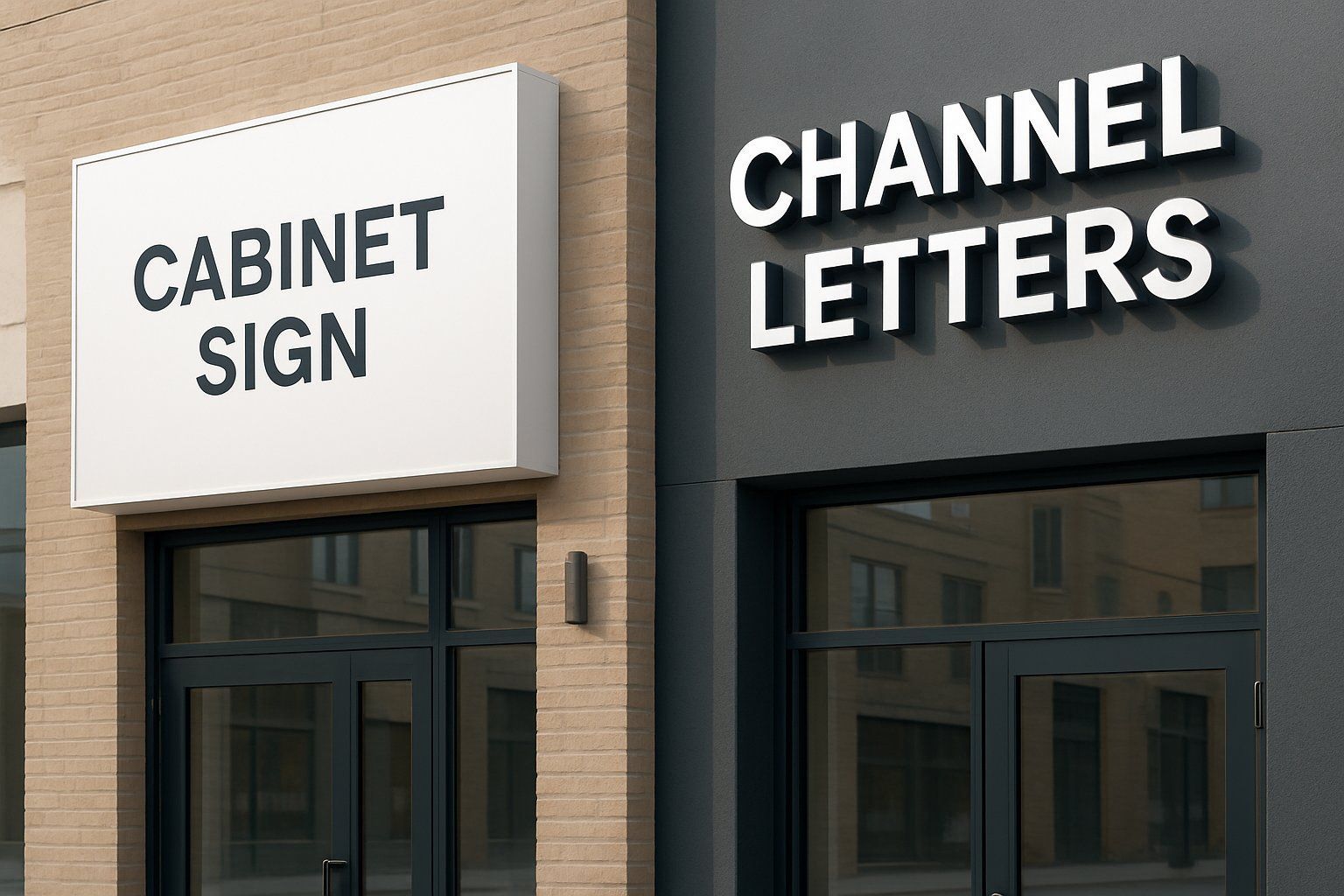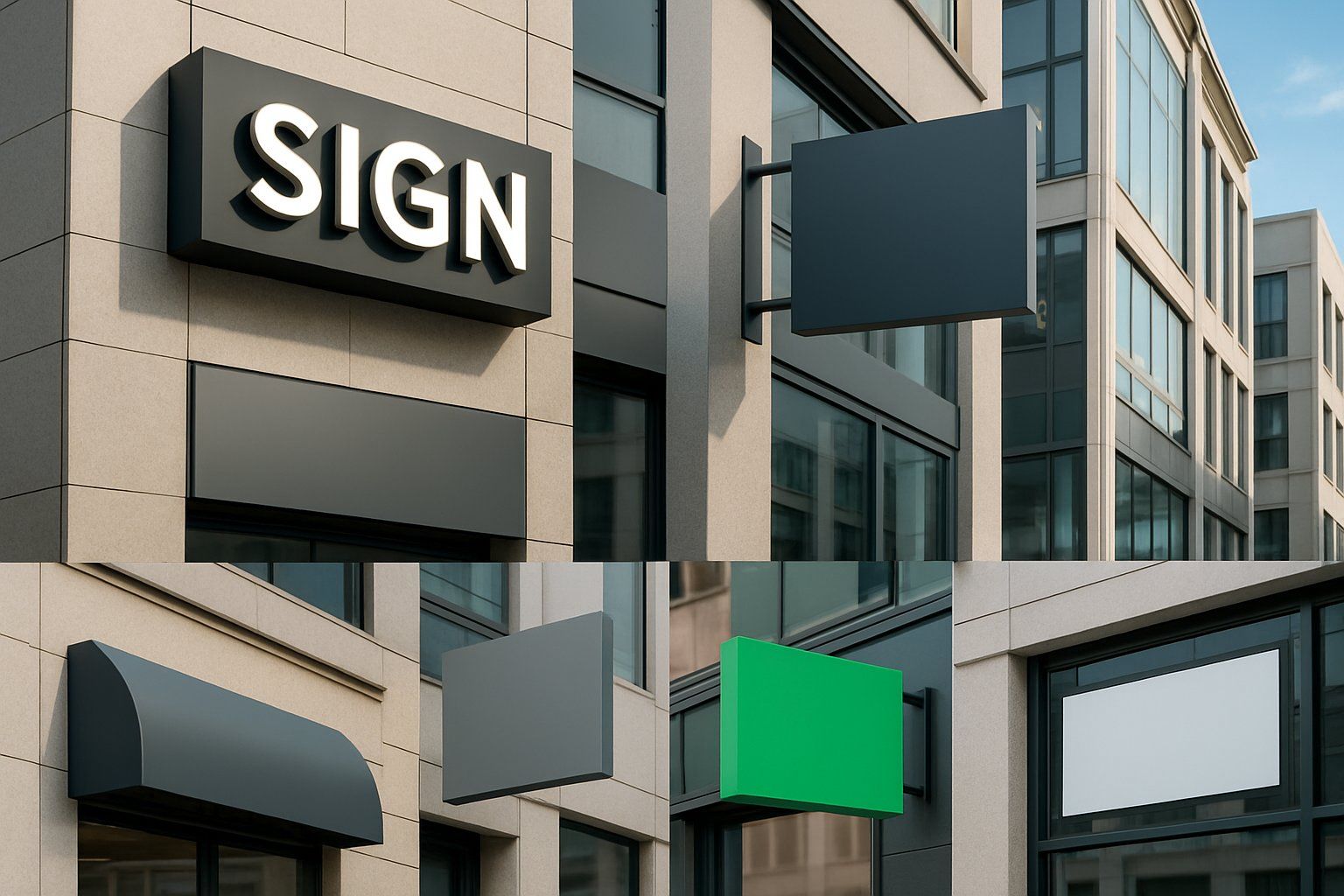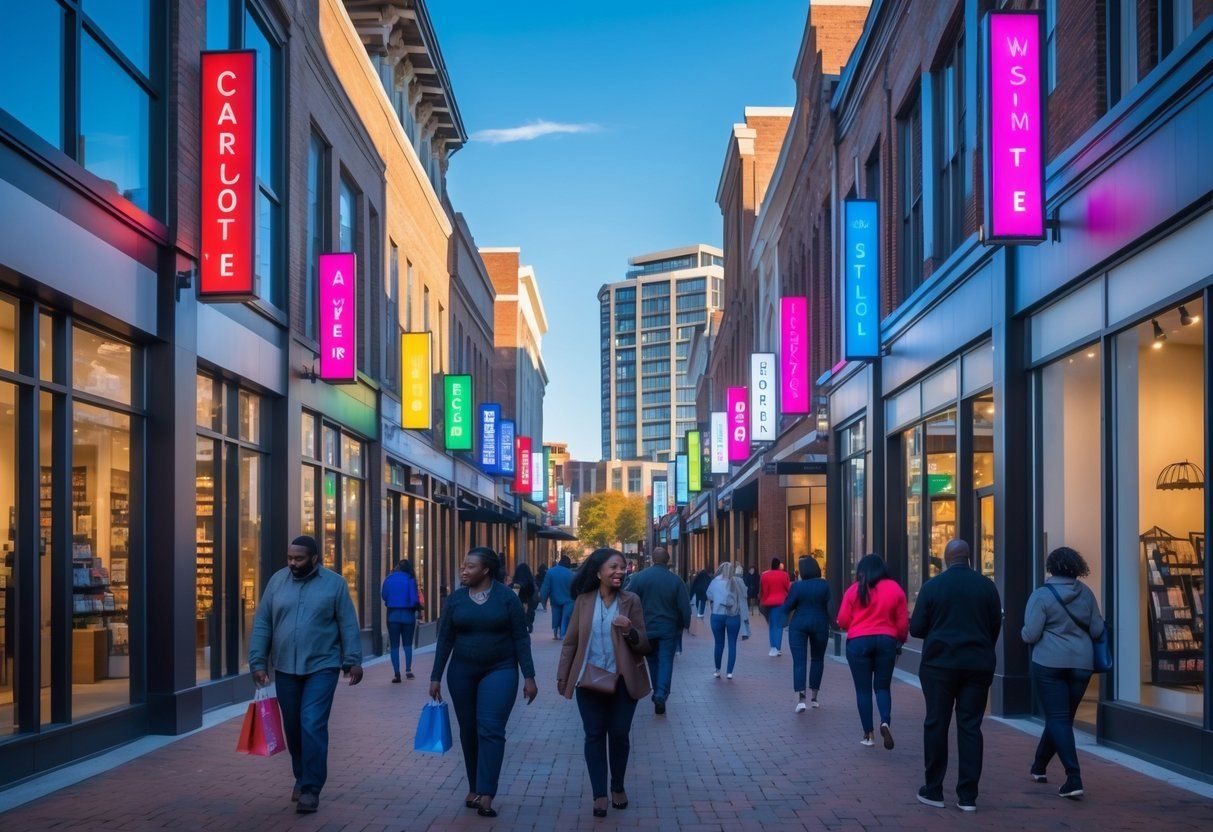Building Signs: What’s the Best to Use? Materials & Types Explained
Choosing the best building sign depends largely on the purpose, location, and budget of the business.
Durable materials like aluminum, stainless steel, and acrylic are often the best choices for outdoor signs because they resist weather and maintain a professional look over time. These materials offer strength while allowing customization in design , making them suitable for various business needs.
Different types of signs serve different roles—whether it’s a simple panel sign for clear visibility or illuminated signs to attract attention day and night.
Considering factors like longevity, maintenance, and environmental conditions will help determine which sign fits best.
Key Takeways
- Durable materials help signs last through harsh weather without losing appeal.
- Sign types vary by purpose and location for maximum impact.
- Choosing the right sign balances cost, maintenance, and visibility needs.
What Are Building Signs?
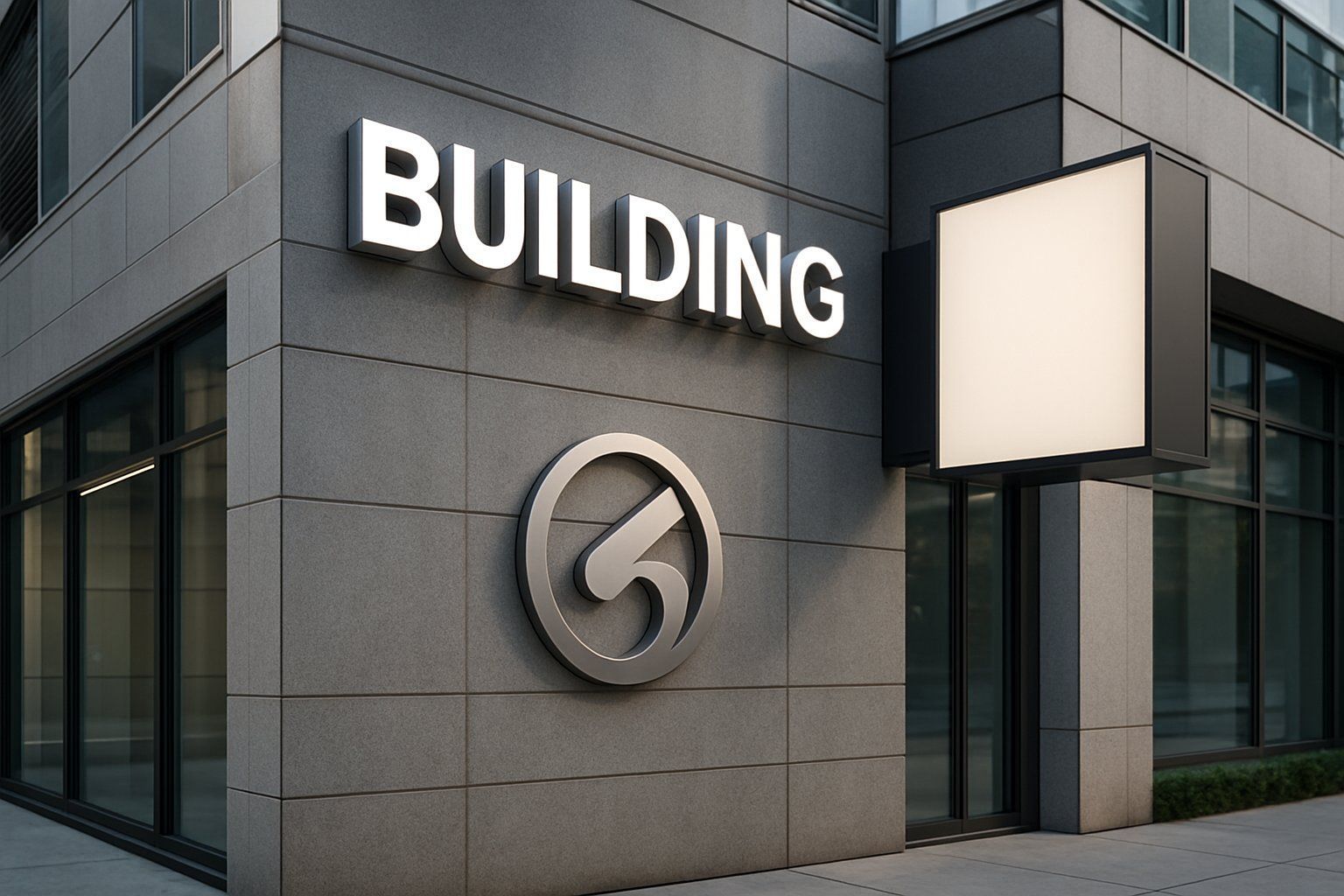
Building signs are visual displays attached to or near a building to show its name, purpose, or brand.
These signs vary in style and material depending on their use and location.
They help people identify a building and provide important information clearly.
Types of Building Signs
There are several common types of building signs , each serving a specific function:
- Fascia Signs: Mounted directly on the building’s facade, these are flat and often display a business name or logo.
- Stand-Off Lettering: These signs project slightly from the surface, giving a 3D effect that improves visibility.
- Door Signs: Smaller signs placed on or near entrances, often indicating office names or operating hours.
- Monument Signs: Freestanding signs placed near the building entrance to create strong brand presence.
- LED Signs: Use light to attract attention, good for visibility day or night.
Each type can be customized in size, color, and material to fit the building’s design and purpose.
Purpose and Benefits
Building signs serve multiple roles beyond simple identification.
They improve navigation by guiding visitors to the right location.
Signs also enhance brand visibility by showcasing logos and company colors.
Well-designed signs increase customer trust and make a business easier to find.
They can set the tone for the business, whether professional, welcoming, or modern.
Using quality materials ensures the sign remains attractive despite weather or wear.
Clear building signs reduce confusion, support advertising, and can boost foot traffic.
They also offer a cost-effective, long-term way to promote a business’s presence.
Indoor vs Outdoor Applications
Building signs differ greatly depending on whether they are indoors or outdoors.
Outdoor signage must withstand weather elements like rain, sun, and wind.
Materials such as aluminum, metal, or weather-resistant vinyl are common for durability.
Outdoor signs need to be visible from a distance and often use bold colors or lighting, like LEDs, for better clarity.
Indoor signs include door signs or directional signs and prioritize legibility in various lighting conditions.
Indoor signs often use materials like acrylic or lighter metals.
They guide visitors inside, mark rooms, and maintain professional aesthetics without requiring extreme durability.
Choosing the right sign for the location ensures effectiveness and longevity.
Key Considerations for Choosing Building Signs
Choosing the right building sign involves thinking about where it will be placed, how it represents the brand, and the costs tied to its materials and upkeep.
These factors determine how well the sign serves its purpose and how long it lasts.
Location and Visibility
The location of a building sign affects who sees it and how clearly they can read it.
Signs placed on busy streets or pedestrian areas should be large enough and have clear fonts to capture attention quickly.
For outdoor signage , lighting is key.
Illuminated signs remain visible after dark, increasing exposure.
Wall signs must fit the building’s architecture while staying noticeable from common viewpoints.
Visibility is also influenced by height and angle.
Signs too high or flat against a window might be missed by drivers or walkers.
Considering traffic speed and sightlines ensures that passersby can easily spot and read the sign.
Branding and Design
A building sign should reflect the business’s brand clearly.
Using consistent colors, logos, and fonts builds recognition and trust in customers.
Design simplicity is important.
Too much text or complicated graphics can confuse viewers.
A focused message with high-contrast colors improves readability.
Custom signs can better match a company’s style than generic templates.
The design needs to fit the type of sign— channel letters offer a modern look, while cabinet signs allow detailed logos.
Professional design helps make the sign look polished and communicates professionalism.
Budget and Longevity
Budget limits the materials and size of a building sign.
Durable materials like aluminum or acrylic cost more initially but last longer outdoors, resisting weather damage.
Low-maintenance signs reduce costs over time.
LED lighting, while more expensive upfront, saves energy compared to traditional bulbs.
Wall signs and other outdoor signage require proper installation to avoid damage and ensure stability.
Investing in quality installation reduces repair costs.
Balancing initial price with expected lifespan helps businesses get the most value from their signage investment.
Sign Materials Overview
Choosing the right sign material affects how well a sign lasts and looks.
Some materials work better indoors while others handle weather and wear outside.
Cost, weight, and maintenance needs also vary.
Acrylic Signs
Acrylic signs offer a clear, polished look similar to glass but are lighter and less fragile.
They suit indoor areas like offices and stores where a smooth, modern finish is needed.
Acrylic is easy to cut and shape, allowing for custom designs.
It resists shattering better than glass but can scratch or discolor if exposed to strong sunlight over time.
Acrylic signs are more affordable than glass but require care to maintain their glossy appearance.
Acrylic is a good choice when style and lightweight material are important but harsh outdoor conditions are not expected.
PVC Signs
PVC signs are affordable, lightweight, and flexible.
They are often used for temporary or short-term signs, such as banners, trade shows, or events.
PVC is moisture resistant, making it fine for indoor use or brief outdoor exposure.
However, PVC can warp, fade, or become brittle if left in sunlight or bad weather for long.
It offers less durability than metal or acrylic but works well when cost and quick installation matter more than long-term wear.
PVC fits projects needing budget-friendly, easy-to-handle signs for limited use or changing displays.
Aluminum Signs
Aluminum is strong yet light, making it popular for outdoor signs like real estate boards and traffic signs.
It resists rust and corrosion, so the sign keeps its look over years of exposure to rain and sun.
It is affordable compared to steel or glass but can dent or scratch if hit.
Aluminum does not have the natural wood feel or luxurious glass shine but balances durability, weight, and cost well.
Its versatility suits various types of business and directional signage needing long-lasting performance.
Wood Signs
Wood signs provide a natural, classic appearance that works well for rustic or handcrafted styles in boutiques and outdoor settings.
They come in many finishes and can be stained or painted for different looks.
Wood requires regular maintenance to prevent damage from moisture or sun, such as warping or rotting.
Proper sealing helps protect it outdoors, but it may still need upkeep.
Wood is chosen when warmth and character are priorities and some maintenance is acceptable for the sign’s lifespan.
Specialty Building Sign Options
Different types of specialty signs offer unique benefits depending on the business’s location, visibility needs, and brand image.
These options focus on durability, appearance, and how well they attract attention.
Dimensional Letters
Dimensional letters are raised signs that stand out from flat surfaces.
They use materials like metal, plastic, or wood to create a three-dimensional effect.
These letters do not light up but offer a clean and professional look.
They work well for businesses that want subtle, elegant branding or a modern appearance.
Dimensional letters are durable and weather-resistant, making them suitable for outdoor use.
They can be painted or finished to match a brand’s color scheme.
Placement height and letter size should match viewing distance for easy readability.
Channel Letters
Channel letters are three-dimensional, often illuminated signs shaped like individual letters or logos.
They are widely used on storefronts.
They typically have LED lighting inside for visibility during the day and night.
This lighting boosts the sign’s impact, especially in busy or dark areas.
Channel letters can be customized in size, font, and color.
Their design makes them highly noticeable from a distance, helping to draw in foot traffic and passersby.
Monument Signs
Monument signs are ground-level signs placed near building entrances or roadways.
They often feature a solid base or structure for stability.
These signs are large and visible from multiple angles, making them ideal for businesses with big properties or needing clear wayfinding.
Monument signs support a wide variety of materials like stone, brick, or metal.
Their design options range from simple to elaborate, allowing customization to reflect the brand image.
They are built to last and require minimal maintenance.
Illumination Choices for Building Signs
Choosing the right lighting for building signs affects visibility and brand presentation.
Effective signs use lighting to stand out at night and attract attention from a distance, especially in busy areas.
The right illuminated option also balances energy use and maintenance needs.
Backlit Signs
Backlit signs use light sources placed behind letters or panels to create a glowing effect around the edges or through the face of the sign.
This technique often involves LED lights, which are energy-efficient and last longer than traditional bulbs.
They commonly appear as halo lit signs where each letter has a light source behind it, producing a soft halo glow.
This adds depth and makes the sign easier to read from far away or in low-light conditions.
Many businesses place backlit signs near roads or in busy pedestrian zones to improve visibility.
Backlit signs can be customized with different colors and fonts.
The choice of materials like acrylic or metal affects both the look and durability.
Installation requires access to power sources and sometimes special mounting to accommodate the light fixtures behind the sign.
Illuminated Signs
Illuminated signs cover a broader group that includes backlit signs but also lightboxes, neon, and panel signs lit from the front or inside.
These signs rely on various lighting technologies such as LEDs, fluorescent tubes, or neon gas to brighten the sign face.
For example, lightbox signs have translucent panels lit from behind, which makes logos and messages clear and bright.
Neon signs use glowing tubes filled with gas but are now often replaced by LED neon for better energy use and lifespan.
Illuminated signs help businesses stand out, especially at night or in areas with many visual distractions.
Their designs vary to match different business needs, offering options from simple to highly decorative.
Maintenance and energy consumption depend on the type of lighting and materials chosen.
How to Select the Best Building Sign for Your Needs
Choosing the right building sign involves understanding your environment and leveraging expert advice.
This helps ensure the sign meets visibility , durability, and branding requirements.
Assessing Environmental Conditions
Environmental factors heavily influence the choice of building signs.
For outdoor signs, weather plays a key role.
Areas with strong sun exposure need materials that resist fading, such as aluminum or high-density urethane.
Locations with heavy rain or snow require signs made from water-resistant and sturdy materials to prevent damage.
Visibility is another concern.
Signs on busy roads with fast-moving traffic benefit from larger sizes and elevated placements.
In contrast, signs in pedestrian-heavy zones should be smaller and placed at eye level for easy reading.
The surrounding environment also affects design.
Signs must complement the building’s architecture and stand out without clashing with nearby signs or natural features.
Proper lighting, such as illuminated or backlit signs, improves visibility during low light or nighttime.
Consulting With Signage Experts
Professional sign companies offer valuable guidance on material selection, design, and installation. Their expertise helps match the sign type to the business’s location and audience.
Experts also ensure compliance with local regulations, avoiding costly fines or removals. Sign experts evaluate maintenance needs, advising on materials that suit a budget while remaining durable.
They understand which sign styles, like monument signs or channel letters, work best for specific visibility and branding goals. Working with professionals also means access to custom design services.
This helps maintain brand consistency through exact colors, fonts, and logos.
Frequently Asked Questions
Choosing the right materials and styles for building signs impacts their durability, visibility, and appeal. Factors such as weather resistance, design trends, and business location guide the best choices for effective signage.
What are the most durable materials for outdoor building signs?
Metal, aluminum, and high-density polyethylene (HDPE) are among the most durable materials. They resist rust, fading, and impact better than many plastics.
Acrylic and PVC can be durable but may degrade faster in sunlight or harsh weather. Using UV-resistant coatings extends their lifespan.
Which types of business signs are most effective for street visibility?
Channel letters and illuminated cabinet signs stand out on busy streets. They are often lit for night visibility and can be customized in size and color.
Monument signs at property entrances also attract attention from passing drivers. Blade signs work well in pedestrian areas.
How do current design trends affect business sign choices?
Clean, minimalist designs with bold fonts and simple colors improve readability. Many businesses now prefer LED lighting for energy-efficient illumination.
Consistency with brand colors and fonts remains important. Using digital message centers allows quick updates to promotions or information.
What are the advantages of using metal signs over plastic ones?
Metal signs offer greater strength and weather resistance. They are less likely to crack or warp over time.
Metal also allows for sharper engraving and a more professional appearance. Plastic signs may be cheaper but often require more maintenance.
How do different sign materials fare in various weather conditions?
Metal resists wind, rain, and sun well but may need coatings to prevent corrosion. Acrylic is good for areas with less intense sun but can become brittle in cold climates.
Vinyl banners and fabric signs are flexible but may wear quickly in strong winds or heavy rain. Choosing materials depends on climate and exposure.
What are the key considerations when choosing signage for a business?
Legibility from a distance is critical. This includes font size, color contrast, and lighting.
Local laws and rules about sign size, placement, and permits must be followed.
Maintenance needs and the sign’s impact on brand image also matter.…

